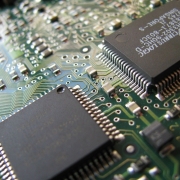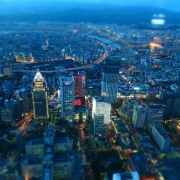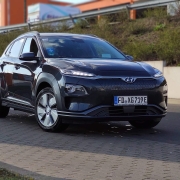What does United Microelectronics do?
Paper 1: Understanding the Global Economy (1945-2000)
Section B: Essay Writing
Theme II Chapter 3: Rise of Asian Tigers from 1970s to 1990s [South Korea and Taiwan]
Historical context: Silicon Valley of the East
On 22 May 1980, the United Microelectronics Corporation (UMC) was formed as the first-ever private integrated circuit (IC) company in Taiwan. The UMC was a product of the state-backed technology R&D institution, known as the Industrial Technology Research Institute (ITRI).
Under the leadership of President Chiang Ching-kuo (蔣經國), the government embarked on an ambitious project to encourage knowledge and skills acquisition in the private sector to intensify Taiwan’s industrial development.
The UMC occupied the Hsinchu Science Park (HSIP, 新竹科學園區), which was modelled after the Silicon Valley.
Located in Hsinchu County, approximately 80 km to the south of the capital city Taipei, HSIP had easy access to the international airport and harbours, a skilled labour force and abundant technological resources, including two national universities and the government-sponsored ITRI. Since its inception, HSIP has received over US$500 million from the government, earmarked for the acquisition and development of land and construction of housing and factories.
An excerpt from “The Silicon Dragon: High-Tech Industry in Taiwan” by Terence Tsai and Bor-Shiuan Cheng.
Enter the age of semiconductors
Under the astute leadership of Robert Tsao (曹興誠), who became president of UMC in 1982, the UMC became the first IC manufacturer in Taiwan to provide wafer foundry services.
In the late 1980s, the UMC broadened its scope of production, venturing into Dynamic Random Access Memory (DRAMs) and telecommunications circuitry. Tsao believed that specialisation in foundry services was the ideal model for the UMC to thrive.
The UMC turned out to be a successful spin-off from HSIP, as seen by its entry to the Taiwan Stock Exchange in 1985. From then on, the UMC went further to build increasingly advanced chips, such as Static Random Access Memory (SRAMs).
A similar venture: The TSMC
In 1987, the Taiwan Semiconductor Manufacturing Company (TSMC) was set up. It was the second spin-off from the HSIP after the UMC. The company was a joint development with the Dutch company Philipps and the Taiwanese government.
Interestingly, the Chiang government had invited Morris Chang, who later became founder of the TSMC, to lead the ITRI in the early 1980s. Chang had put forward the idea of creating a foundry industry in Taiwan.
Originally the ERSO sent a team to RCA in the US to learn integrated circuit (IC) manufacturing technology. After the team returned to Taiwan, the members spun off from ERSO to form UMC, which began chip manufacturing.
[…] Chang led a team spun off from ITRI to form TSMC in 1987. The new business model proved effective, and TSMC became the largest semiconductor foundry in the world with $5.3 billion of sales in 2000. TSMC was therefore mainly a Taiwanese creation with state participation in ownership (48 per cent in the beginning).
An excerpt from “The East Asian High-Tech Drive” by Yun-Peng Chu and Hal Hill.
Evidently, the successes of the UMC and TSMC were partly attributed to the joint efforts of the Taiwanese and American governments (Electronics Research and Service Organization, ERSO, the Radio Corporation of America, RCA). By giving their founders and core team members the opportunities to acquire the technical know-how, the aim of creating a semiconductor industry in Taiwan could finally materialise.
What can we learn from this article?
Consider the following question:
– Assess the view the the United Microelectronics Corporation was a crucial piece of the puzzle in explaining the remarkable growth of Taiwan in the 1980s.
Join our JC History Tuition to learn more about the rise of Asian Tiger economies and the Global Economy. The H2 and H1 History Tuition feature online discussion and writing practices to enhance your knowledge application skills. Get useful study notes and clarify your doubts on the subject with the tutor. You can also follow our Telegram Channel to get useful updates.
We have other JC tuition classes, such as JC Math Tuition and JC Chemistry Tuition. For Secondary Tuition, we provide Secondary English Tuition, Secondary Math tuition, Secondary Chemistry Tuition, Social Studies Tuition, Geography, History Tuition and Secondary Economics Tuition. For Primary Tuition, we have Primary English, Math and Science Tuition. Call 9658 5789 to find out more.




